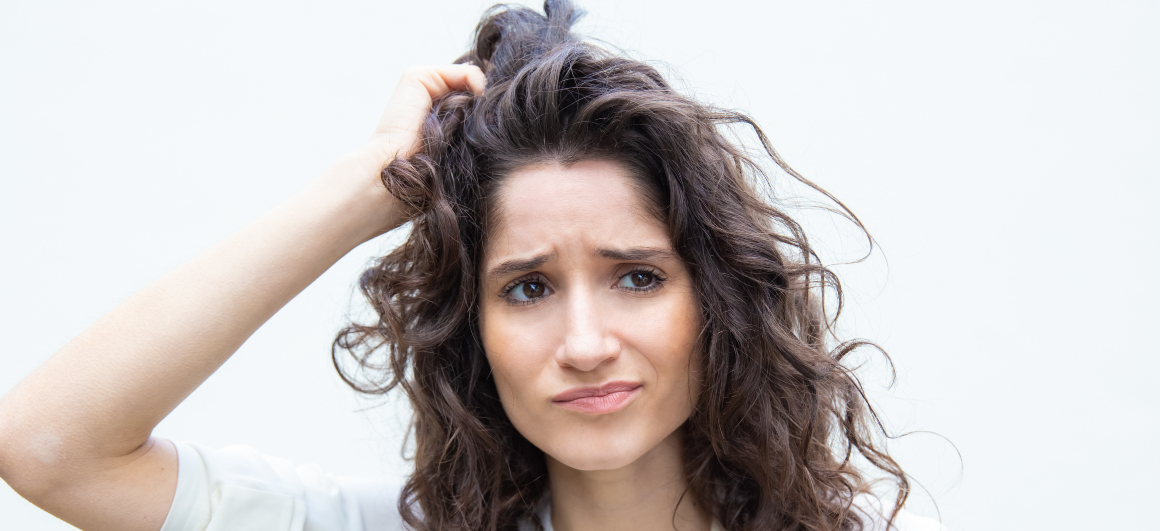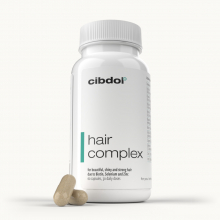How to make your hair healthy again: Tips for repairing damaged hair.
Published:
Make Your Hair Healthy With These 10 Expert Tips
Want shiny, smooth, strong hair? Who doesn't! Unfortunately, many factors like heat styling, coloring, and improper care can leave hair dry, brittle, and damaged. The good news is that with some simple changes to your hair care routine, you can dramatically improve the health of your hair.
Contents:
- Make Your Hair Healthy With These 10 Expert Tips
- Should You Be Washing Your Hair Less Often?
- How Can You Repair Damaged Hair?
- What's the Best Way to Dry Your Hair?
- How Often Should You Get a Trim?
- What Products Promote Hair Growth?
- How Often Should You Use a Hair Mask?
- What Are the Best Hairstyles for Healthy Hair?
- How Can You Prevent Heat Damage When Styling?
- What Ingredients Should You Look for in Hair Products?
- When Should You Make an Appointment With a Stylist?
- In Conclusion:
- What are some tips for repairing damaged hair?
- How can I protect my hair from further damage?
- How often should I brush my hair?
- What can cause damage to my hair?
- What are some natural ways to make my hair healthier?
- How can I leave my hair looking healthier?
- What are some healthy hair habits?
- How can I protect my hair while dyeing it?
- How can I get healthy hair naturally?
- What can I do to prevent dry and damaged hair?
In this article, we'll cover the top 10 tips and tricks for getting and maintaining healthy, beautiful hair. From how to wash and condition to the best products and practices, read on to learn how you can make your hair its healthiest yet!

Should You Be Washing Your Hair Less Often?
Many people wash their hair daily, but is this actually damaging your hair? Washing too frequently can strip your hair of its natural oils and leave it dry. For most hair types, washing every 2-3 days is sufficient. Allowing your natural oils to remain can help keep your hair hydrated and healthy.
Be sure to use a gentle, sulfate-free shampoo when you do wash. Massage it into your scalp without scrubbing too hard. And don't forget to condition those ends which get the most wear and tear!
How Can You Repair Damaged Hair?
If your hair is dry, brittle, and damaged, don't despair. You can nurse it back to health! First, get a trim to cut away any split or frayed ends. Then commit to deep conditioning your hair 1-2 times per week. Look for a moisturizing hair mask containing ingredients like shea butter, coconut oil, and argan oil.
Avoid heat styling and additional chemical processing while your hair recovers. Handle damaged hair gently and use a wet brush or wide-tooth comb when detangling. With time and TLC, you'll get your hair back into shape!
What's the Best Way to Dry Your Hair?
Rubbing your hair vigorously with a towel or blasting it with hot air can worsen hair damage. Instead, gently squeeze out excess moisture then let your hair air dry the rest of the way. This prevents unnecessary friction and maintains your hair's natural oils.
If you do use a blow dryer, always apply a heat protectant first. Keep the temperature and speed on low to medium. Direct the airflow downward along the hair shaft instead of blasting your roots. Take your time drying in sections to minimize damage.
How Often Should You Get a Trim?
Getting your hair trimmed regularly is key for maintaining healthy hair from roots to ends. The general recommendation is to get a trim every 6-8 weeks. Split ends travel up the hair shaft over time, so getting them cut off prevents breakage and minimizes the appearance of damage.
Ask your stylist to take off just 1/4 to 1/2 inch each visit. This keeps split ends at bay without chopping off all your length. Time your trims around when you color or chemically treat your hair, as processing can exacerbate damage.
What Products Promote Hair Growth?
Diet, stress, hormones, and genetics all influence hair growth. While you can't necessarily grow more hair, you can optimize conditions to support healthy growth. Make sure you're getting sufficient protein, iron, zinc, and vitamins A, C, and E. Avoid hairstyles that pull tightly on the scalp. Massage your scalp to increase blood flow.
Certain ingredients may also help, like biotin, keratin, ginseng, and castor oil. Look for shampoos, conditioners, and treatments designed to stimulate growth and strengthen hair follicles. Consistency is key to seeing results.
How Often Should You Use a Hair Mask?
Hair masks provide an extra dose of hydration and nourishment for dry, damaged hair. They contain concentrated conditioning ingredients that penetrate more deeply than everyday conditioner. Using a mask 1-2 times per week helps strengthen strands and restore shine.
Focus masks on the mid-lengths and ends of your hair. Apply after shampooing, let sit 5-10 minutes, then rinse. For added benefit, apply mild heat from a shower cap or towel. DIY masks with avocado, olive oil, honey, and eggs can also do the trick. Give your hair some extra TLC!
What Are the Best Hairstyles for Healthy Hair?
Certain hairstyles put more stress on your strands than others. Any tightly pulled styles like ponytails or braids can cause breakage, especially if secured with tight elastics or metal clips.
For healthy hair, opt for loose styles without excessive tension. Try a loose top knot or bun, a low side braid, or soft waves. When you do wear ponytails or headbands, use fabric scrunchies instead of regular hair ties. Change up your part frequently to avoid excess pull on one section.
How Can You Prevent Heat Damage When Styling?
Frequent use of hot styling tools like flat irons and curling wands can severely damage hair over time. To minimize the effects, always first apply a heat protectant. These sprays and serums contain silicones and other ingredients that coat the cuticle and protect it from extreme heat.
Also, limit the temperature on your styling tools to 300-350 degrees to avoid frying your hair. Work in sections and move tools slowly and carefully from roots to ends. Let your hair fully cool before repeating a section. Air dry when possible or use the cool setting on your blow dryer.
What Ingredients Should You Look for in Hair Products?
Choosing hair products with the right ingredients for your hair type and concerns is key. For dry or damaged hair, seek out moisturizing oils and butters like argan, coconut, shea, and avocado. Keratin helps strengthen weakened strands while silk proteins boost shine.
Avoid sulfates and harsh detergents that can strip away natural oils. Look for lighter products like leave-in treatments and oils if your hair is fine or tends to get greasy. Read reviews to find the best products for your specific hair needs and concerns.
When Should You Make an Appointment With a Stylist?
Don't wait until your hair is desperately in need of help. Book regular appointments with a stylist - ideally every 6-8 weeks - for trims, deep conditioning treatments, and assessments on the health of your hair.
Come prepared with any hair concerns and questions. Your stylist should look at your hair from roots to ends under good lighting to see any damage and signs of changes in texture or thickness. Getting on a regular salon schedule will help keep your hair in great shape!
In Conclusion:
- Wash hair 2-3 times per week with a gentle shampoo
- Repair damaged hair with trims, deep conditioning, and gentle handling
- Let hair air dry when possible and use heat protectant when heat styling
- Get regular trims every 6-8 weeks to prevent split ends
- Use hair masks 1-2 times per week for added moisture
- Opt for loose hairstyles over tightly pulled styles
- Apply a heat protectant and limit heat tool temperature
- Choose products with moisturizing oils and proteins
- Make regular salon appointments for trims and treatments
By tailoring your hair care routine to your hair's needs and being consistent, you can achieve strong, shiny, vibrant hair! What tips will you try for getting your healthiest hair ever?
What are some tips for repairing damaged hair?
Some tips for repairing damaged hair include deep conditioning treatments, using hair care products specifically designed for damaged hair, and avoiding heat styling tools.
How can I protect my hair from further damage?
To protect your hair from further damage, you can try to avoid excessive brushing, use heat protectant products before heat styling, and wear a hat or scarf when exposed to harsh environmental conditions.
How often should I brush my hair?
It is recommended to brush your hair gently and not more than twice a day to avoid causing damage and breakage.
What can cause damage to my hair?
There are various factors that can cause damage to your hair, such as excessive heat styling, chemical treatments like dyeing or perming, using harsh hair care products, and environmental factors like sun exposure and pollution.
What are some natural ways to make my hair healthier?
Some natural ways to make your hair healthier include following a balanced diet, using natural hair care products, regularly moisturizing your hair and scalp, and avoiding excessive styling and heat treatments.
How can I leave my hair looking healthier?
To leave your hair looking healthier, you can try using a leave-in conditioner, applying hair oil or serum to add shine, and avoiding the use of harsh styling products.
What are some healthy hair habits?
Some healthy hair habits include washing your hair regularly but not too frequently, using a wide-toothed comb to detangle wet hair, trimming your hair regularly to prevent split ends, and avoiding tight hairstyles that pull on the hair.
How can I protect my hair while dyeing it?
To protect your hair while dyeing it, you can use a deep conditioning treatment before and after coloring, choose a hair dye specifically formulated for damaged hair, and avoid overlapping the dye on previously treated hair.
How can I get healthy hair naturally?
To get healthy hair naturally, you can incorporate a nutritious diet rich in vitamins and minerals, drink plenty of water to stay hydrated, and avoid using excessive heat and chemicals on your hair.
What can I do to prevent dry and damaged hair?
To prevent dry and damaged hair, you can avoid over-styling your hair with heat, use a moisturizing shampoo and conditioner, and regularly apply nourishing hair masks or oils.















